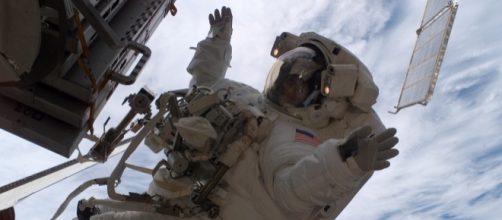In order to be shortlisted by NASA to go to Space, astronauts are supposed to be perfectly healthy with no history of any known chronic conditions. After undergoing years of laborious training, their activities are closely monitored by a Flight Surgeon, months before the launch.
As a result, the risk of an astronaut getting seriously ill or needing intensive care is as low as roughly 1% to 2% per person a year, notes Dr David Green, senior lecturer in Aerospace Physiology at King’s College London, in a BBC report.
However, despite NASA’s extensive screening process and gruelling physical training, astronauts do get sick or injured at times.
After all, they’re mere mortals just like the rest of us.
Falling sick in space
According to NASA, some of the most common medical problems faced by the astronauts on the International Space Station (ISS) are headaches and motion sickness which usually occurs in the first 48 hours, resulting in dizziness, nausea, and loss of appetite. Other medical conditions include back ache, skin conditions, burns and dental emergencies.
During their 40-hour medical training before launch, astronauts are trained to prepare for a series of Medical Emergencies onboard the ISS. They learn how to stitch a wound, perform dental extraction, give an injection and read an ultrasound.
Other than that, a basic medical kit is also provided on the space station.
It contains an enormous book of medical conditions, a first-aid kit, along with some medical equipment such as an automated emergency defibrillator, a portable ultrasound, and blood pressure cuffs.
“Essentially, ISS crews learn to mostly stabilise and restrain an injured astronaut, and then call the ground to talk to a flight surgeon,” states a WIRED report.
Major health challenges
Most of the problem begins with weightlessness or zero-g. The immune system gets sluggish, hormones go bonkers and wounds heal more slowly. Meanwhile, antibiotic resistance of infectious bacteria increases.
Astronauts who stay on the space station for a long period of time also experience cardiovascular deconditioning, loss of blood volume and weakening of bones and atrophying muscles.
"You can lose about a percent of bone mass every month, and that's the typical situation astronauts are in," American astronaut Mark Kelly tells CNN.
As if that’s not scary enough, even the fittest astronauts are at risk of cardiac arrest because of the harsh nature of space itself. Since lack of gravity renders cardiopulmonary resuscitation (CPR) impossible, alternative methods like reverse bear hug method and the handstand have been developed to replace standard CPR.
Administering drugs is also a tricky task in space. “Once you pop a blister tab, a pill is exposed to air and becomes oxidizable, so it decays in terms of usefulness,” Anil Menon, a Flight Surgeon at NASA tells WIRED.
Performing a surgery
“Everything that we take for granted, even something as simple as putting a Band Aid down on a table, is difficult in space,” says Dmitry Oleynikov of the University of Nebraska Medical Center, in a New Scientist article. “That difficulty increases logarithmically when you’re trying to do complex procedures such as an operation,” adds Oleynikov.
“One of the challenges we have is liquid containment,” says NASA’s Dr Michael Barratt, in a BBC report. “If you nick an artery, there’s enough pressure in it that blood will fly up into the atmosphere and get in the way of your field of view – that’s a huge issue for us,” he explains.
“As NASA and other space agencies continue to make plans for a cislunar station and Martian base, it becomes more and more important for astronauts to be better trained and equipped to deal with medical emergencies,” notes The Science Explorer.
NASA has awarded numerous grants to researchers trying to understand and develop possible medical interventions. Recently, the space organisation supported a research that focuses on the technique of covering a patient’s wound using a transparent saline-filled dome through which a surgeon could operate and stitch the wound. The device prevents blood from spurting everywhere while keeping the wound isolated and clean.
The space agency is also investigating the use of robotic surgeons in space. The idea is to use pre-programmed or remote-controlled droids to perform complicated surgeries.


